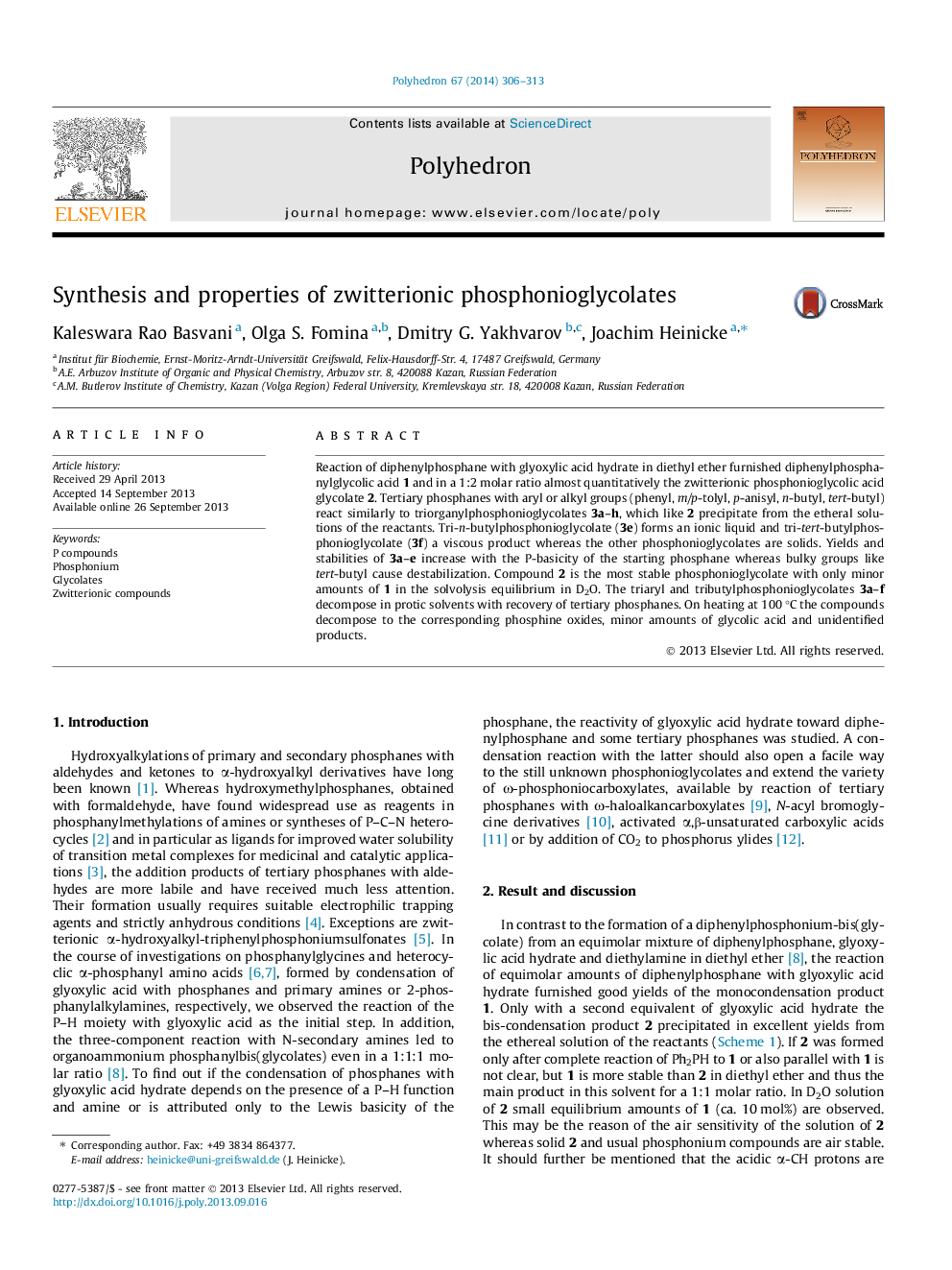| Article ID | Journal | Published Year | Pages | File Type |
|---|---|---|---|---|
| 1335483 | Polyhedron | 2014 | 8 Pages |
Reaction of diphenylphosphane with glyoxylic acid hydrate in diethyl ether furnished diphenylphosphanylglycolic acid 1 and in a 1:2 molar ratio almost quantitatively the zwitterionic phosphonioglycolic acid glycolate 2. Tertiary phosphanes with aryl or alkyl groups (phenyl, m/p-tolyl, p-anisyl, n-butyl, tert-butyl) react similarly to triorganylphosphonioglycolates 3a–h, which like 2 precipitate from the etheral solutions of the reactants. Tri-n-butylphosphonioglycolate (3e) forms an ionic liquid and tri-tert-butylphosphonioglycolate (3f) a viscous product whereas the other phosphonioglycolates are solids. Yields and stabilities of 3a–e increase with the P-basicity of the starting phosphane whereas bulky groups like tert-butyl cause destabilization. Compound 2 is the most stable phosphonioglycolate with only minor amounts of 1 in the solvolysis equilibrium in D2O. The triaryl and tributylphosphonioglycolates 3a–f decompose in protic solvents with recovery of tertiary phosphanes. On heating at 100 °C the compounds decompose to the corresponding phosphine oxides, minor amounts of glycolic acid and unidentified products.
Graphical abstractThe title compounds are formed from the secondary diphenylphosphane with two or from tertiary phosphanes with one equivalent of glyoxylic acid hydrate in diethyl ether. The diphenylphosphonioglycolate 2 is soluble in D2O with partial solvolysis to 1 whereas the triaryl- or trialkylspecies 3 are highly sensitive to OH or OD compounds. Heating or prolonged storage (over months to years) leads to phosphine oxides 4.Figure optionsDownload full-size imageDownload as PowerPoint slide
